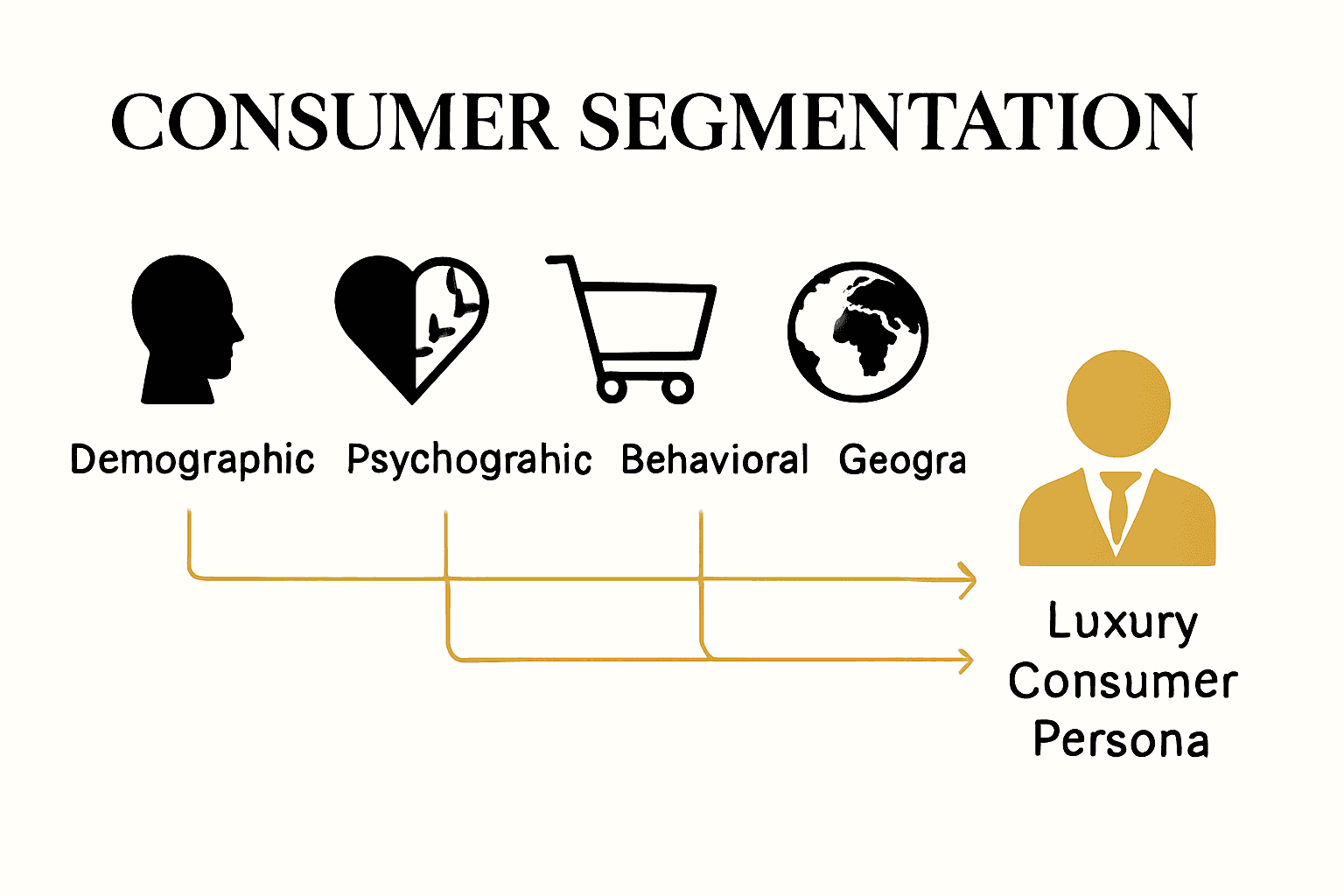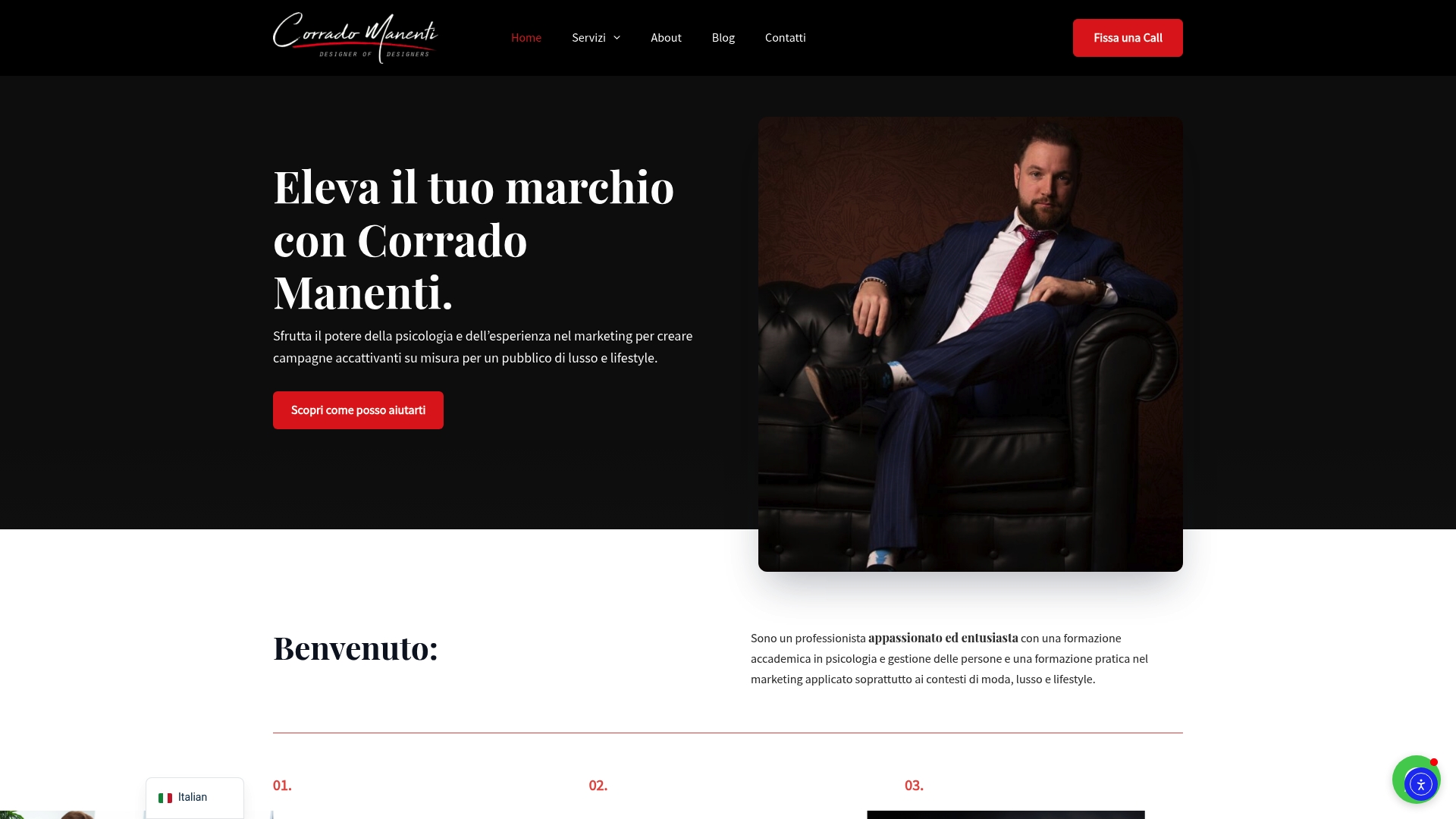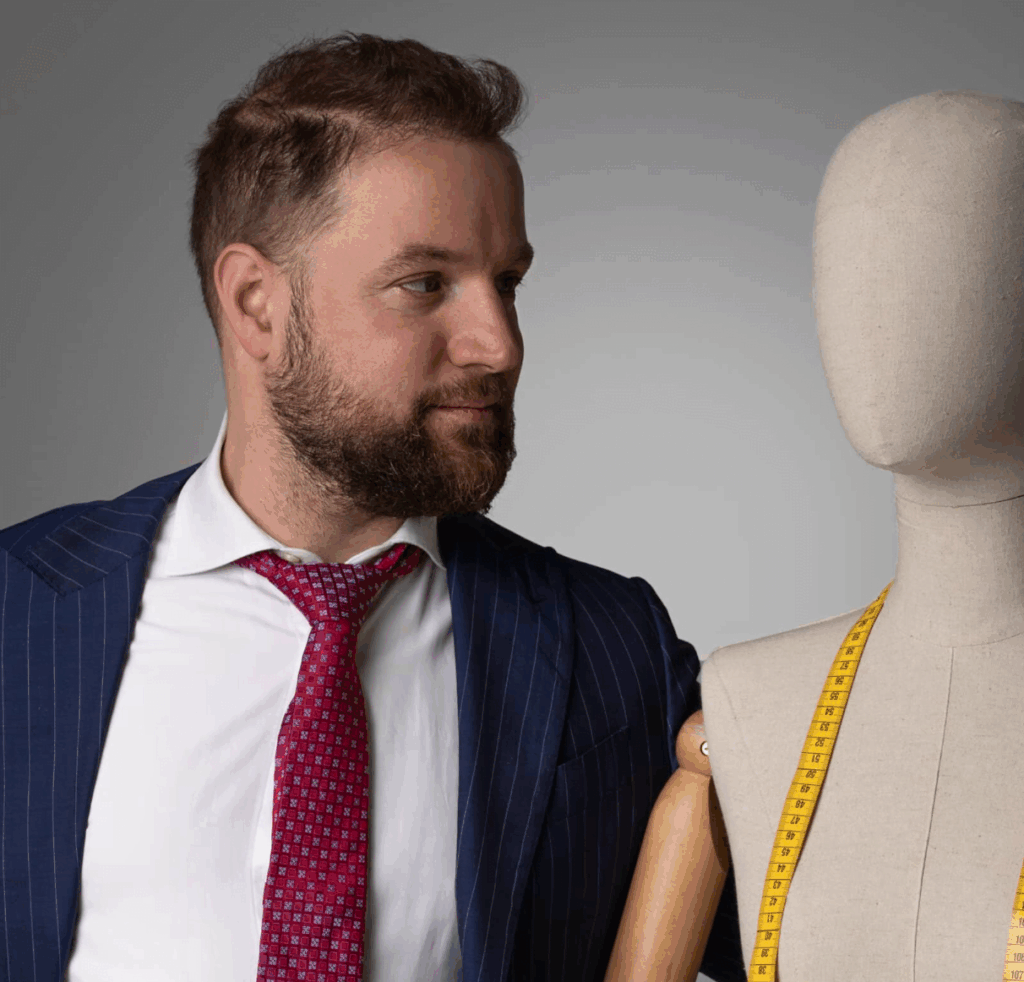Over 70 percent of purchasing decisions are influenced by subconscious emotions and habits. Understanding what truly drives buyers unlocks a whole new dimension of brand strategy. As today’s markets become more competitive and consumer preferences shift rapidly, brands need more than just surface-level insights. This exploration into consumer behavior analysis reveals the science behind purchase decisions and shows how deep psychological understanding helps companies resonate powerfully with their audiences.
Key Takeaways
| Point | Details |
|---|---|
| Consumer Behavior Analysis | Focuses on decoding psychological and emotional factors influencing consumer purchasing decisions to develop precise marketing strategies. |
| Segmentation Models | Incorporates various models like demographic, psychographic, behavioral, and geographic segmentation to create detailed consumer profiles for targeted marketing. |
| Luxury Market Insights | Reveals that emotional and social motivations drive luxury purchases, influencing brands to adopt narrative-driven marketing strategies. |
| Implementation Strategies | Employs advanced tools like predictive analytics and machine learning for deeper understanding of consumer motivations, avoiding common pitfalls in emotional engagement. |
Table of Contents
- Defining Consumer Behavior Analysis In Marketing
- Major Types And Models Of Behavior Analysis
- Core Psychological Drivers In Luxury Markets
- Implementing Consumer Behavior Analysis Strategies
- Common Mistakes And How To Avoid Them
Defining Consumer Behavior Analysis in Marketing
Consumer behavior analysis represents a sophisticated scientific approach to understanding how individuals, groups, and organizations make purchasing decisions. Consumer psychology transforms marketing from guesswork into a precise discipline by decoding the complex motivations behind consumer actions. According to Wikipedia, this multidisciplinary field integrates insights from psychology, sociology, anthropology, economics, and marketing science to explain why consumers choose certain products or services.
At its core, consumer behavior analysis explores the intricate emotional and cognitive processes that drive purchasing decisions. Researchers examine multiple dimensions of consumer interactions, including:
-
Psychological triggers that influence buying choices
-
Social and cultural factors shaping preferences
-
Individual emotional responses to marketing stimuli
-
Economic considerations impacting purchase decisions
Modern consumer insight techniques leverage advanced technologies like big data, machine learning, and social listening to uncover deeper understanding of consumer motivations. As defined by research from Wikipedia, these tools help marketers interpret human behavior trends, revealing underlying moods, desires, and actionable strategic insights that traditional research methods might miss.
The ultimate goal of consumer behavior analysis is transforming raw data into meaningful marketing strategies that resonate authentically with target audiences. By understanding the psychological and emotional landscape of consumers, brands can create more personalized, compelling experiences that drive engagement and loyalty.
Major Types and Models of Behavior Analysis
Consumer behavior analysis encompasses several sophisticated models that help brands understand purchasing dynamics across different contexts. Psychographic segmentation emerges as a powerful approach for decoding consumer motivations beyond traditional demographic categorizations. According to Wikipedia, this model divides consumers based on psychological characteristics such as beliefs, values, motivations, lifestyles, and attitudes, enabling more nuanced and precise marketing strategies.
Key behavioral analysis models include:
- Demographic Segmentation: Categorizing consumers by age, gender, income, education
- Psychographic Segmentation: Analyzing psychological characteristics and lifestyle factors
- Behavioral Segmentation: Tracking purchase history, brand interactions, and consumption patterns
- Geographic Segmentation: Understanding regional preferences and cultural influences
These models work synergistically to create comprehensive consumer profiles. Behavioral segmentation provides particularly granular insights by tracking actual consumer actions rather than just theoretical preferences. Marketers can map consumer journeys, identifying critical decision points and emotional triggers that influence purchasing behavior.

Here’s a comparison of the major consumer segmentation models:
| Segmentation Model | Key Focus | Example Criteria |
|---|---|---|
| Demographic Segmentation | Age, gender, income, education | 18-24 years old College degree |
| Psychographic Segmentation | Values, beliefs, motivations, lifestyle | Health-conscious Luxury seeker |
| Behavioral Segmentation | Purchase history, brand interaction | Frequent buyer First-time user |
| Geographic Segmentation | Regional, cultural, or location-based traits | Urban area Specific country |
Advanced consumer behavior models now integrate technological tools like artificial intelligence and machine learning to predict consumer trends with unprecedented accuracy. By combining psychological insights with data-driven analytics, brands can develop highly personalized marketing approaches that resonate deeply with target audiences, transforming raw consumer data into strategic competitive advantages.

Core Psychological Drivers in Luxury Markets
Luxury consumer psychology transcends simple purchasing decisions, diving deep into complex emotional and social motivations. According to research from Hype Luxury Blog, consumers are driven by multifaceted psychological triggers that go far beyond product utility. Emotional pleasure and self-expression emerge as primary motivational factors, with luxury purchases serving as powerful tools for identity construction and social signaling.
Key psychological drivers in luxury markets include:
- Status Signaling: The Veblen effect where higher prices increase product desirability
- Identity Reinforcement: Expressing actual, ideal, and social self through brand choices
- Emotional Gratification: Experiencing pleasure and personal satisfaction from luxury acquisitions
- Exclusivity Perception: Valuing scarcity and limited accessibility
Interestingly, research reveals that luxury consumers are not merely buying products but purchasing narrative experiences. According to insights from Replothe, these experiences encompass heritage storytelling, craftsmanship appreciation, and the aspiration towards a sophisticated lifestyle. The sensory-rich retail environment plays a crucial role, transforming shopping from a transactional activity into an emotionally immersive journey.
By understanding these psychological nuances, luxury brands can craft more meaningful connections.
Read more about psychology in luxury branding to discover how sophisticated emotional intelligence can transform marketing strategies from generic approaches to deeply personalized consumer experiences.
Implementing Consumer Behavior Analysis Strategies
Consumer behavior analysis transforms complex data into actionable marketing strategies through sophisticated technological approaches. According to Wikipedia, modern consumer insights practices leverage advanced tools like predictive analytics, big data, social media listening, and machine learning to generate deep, actionable understanding of consumer motivations.
Key implementation strategies include:
- Predictive Analytics: Forecasting consumer trends and behaviors
- Machine Learning Segmentation: Dynamic consumer grouping using advanced algorithms
- Social Media Listening: Real-time tracking of consumer sentiments and preferences
- Big Data Integration: Comprehensive data analysis across multiple touchpoints
A groundbreaking approach is the Mixture of Experts (MoE) framework, which research from ArXiv suggests can dynamically segment consumers based on complex behavioral patterns. This machine-learning technique captures nonlinear responses to price, brand, and product attributes, significantly improving forecasting accuracy compared to traditional econometric models.
Learn more about advanced consumer psychology techniques to transform raw data into strategic marketing insights that create meaningful connections with your target audience. By combining technological sophistication with deep psychological understanding, brands can develop unprecedented levels of consumer engagement and personalization.
Common Mistakes and How to Avoid Them
Consumer behavior analysis in luxury markets requires nuanced understanding and strategic implementation. Emotional storytelling stands as a critical element that many brands inadvertently overlook. According to research from What They Think, neglecting sensory packaging design can significantly impede consumer decision-making and emotional engagement.
Common pitfalls in consumer behavior analysis include:
- Overlooking Emotional Triggers: Failing to create sensory-rich experiences
- Generic Personalization: Implementing surface-level customization
- Ignoring First Impressions: Underestimating the power of initial brand interactions
- Data Misinterpretation: Relying on superficial metrics instead of deep psychological insights
Research from Quest Search highlights that onboarding experiences are critical touchpoints often mishandled by luxury brands. Ignoring the psychological impact of personalization and sensory congruence can dramatically undermine customer loyalty. Brands that fail to offer genuine exclusivity and emotionally resonant experiences risk losing high-value customers.
Dive deeper into advanced consumer psychology techniques to transform potential mistakes into strategic opportunities. By cultivating a holistic understanding of consumer motivations, brands can create experiences that not only meet but exceed customer expectations, turning potential pitfalls into moments of exceptional connection.
Turn Luxury Consumer Insights Into Winning Strategies
If you are struggling to convert your deep consumer behavior analysis into measurable growth, you are not alone. Many luxury brands find it difficult to go beyond data and truly engage customers on an emotional level. The article highlighted the importance of psychology-driven marketing, advanced segmentation, and creating experiences that resonate with affluent audiences. However, even sophisticated models like behavioral segmentation or psychographic segmentation can fall short without expert guidance rooted in luxury market realities.

Discover how Corrado Manenti can bridge the gap between raw data and high-impact marketing. With a unique blend of psychological insight and real-world experience in the fashion and luxury sectors, Corrado creates campaigns that speak directly to your clients’ aspirations and emotional drivers. Visit Corrado Manenti’s website now to see how psychology-driven strategies and tailored consulting can transform your brand. Ready to set your luxury marketing apart? Explore his approach to psychology in luxury branding and unlock advanced consumer behavior insights for your business. Take the next step toward authentic brand connection and lasting customer loyalty today.
Frequently Asked Questions
What is consumer behavior analysis in marketing?
Consumer behavior analysis is a scientific method designed to understand the purchasing decisions of individuals, groups, and organizations. It draws on multiple disciplines such as psychology, sociology, and marketing to reveal the motivations behind consumer actions.
How do luxury brands leverage consumer behavior analysis?
Luxury brands use consumer behavior analysis to gain insights into the emotional and psychological factors that drive purchasing decisions. This understanding helps them create personalized marketing strategies and compelling experiences that resonate with their target audiences.
What are the key psychological drivers for luxury consumers?
The primary psychological drivers for luxury consumers include status signaling, identity reinforcement, emotional gratification, and exclusivity perception. These factors influence how consumers view luxury products as expressions of self-identity and social status.
What common mistakes do luxury brands make in consumer behavior analysis?
Common mistakes include overlooking emotional triggers, implementing generic personalization, ignoring first impressions, and misinterpreting data. These errors can result in missed opportunities for building deeper connections with consumers.



